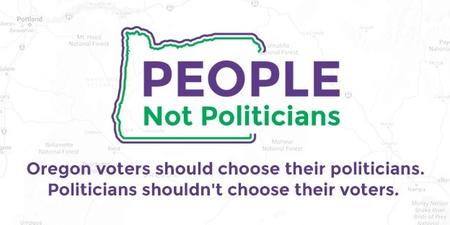From the People Not Politicians coalition.
What is redistricting?
Redistricting is the process of redrawing the lines that define political districts. For legislative and congressional districts, this typically occurs after the completion of the federal census every ten years. Redistricting should change districts to more accurately reflect the changes in population and interests of constituents.
Learn more HERE.
Current Oregon Process
Every 10 years, the US Census requires that states must re-draw legislative and congressional electoral districts to account for population changes. Currently, these legislative and congressional districts in Oregon are drawn by legislators and subject to a veto by the Governor.
Redistricting in Oregon
- New district lines based on the 2020 census will be especially important because Oregon is projected to gain a sixth U.S. congressional seat due to population growth.
- Only four states in the West – including Oregon – don’t have some form of independent redistricting.
- Only twice since 1911 has the Oregon legislature passed a redistricting plan that became the final adopted plan. Oregon politicians have failed more often than not.
Read more about Oregon’s history of redistricting.
The League of Women Voters of Oregon and Redistricting.
Position statement on Redistricting – Adopted 2007
Congressional and legislative redistricting should advance the fundamental purposes of representative democracy and a republican form of government by affording the people a meaningful choice in electing their representatives and holding the government accountable to the people. The League of Women Voters of Oregon believes that the Oregon legislative and congressional redistricting system should be efficient, adequately funded, based on well-defined criteria, subject to a reasonable and effective timetable, and have an open and public process.
- Any redistricting plan should assure that voters are effectively able to hold their public officials accountable, responsible, and responsive, and be based on the following criteria:
- Adhere to all federal constitutional and legal requirements, such as that every district should have equal population, be contiguous, and meet the requirements of the Voting Rights Act;
- Promote competitiveness and partisan fairness;
- Consider other criteria, such as respect for political subdivisions, communities of interest, and geographic barriers.
- Any redistricting plan should be developed independently of the Legislature in a nonpartisan manner with substantial public input. The Legislature may be afforded an opportunity to review the plan and accept or reject it.
- The Oregon Supreme Court should promptly review and rule on any challenge to a redistricting plan and require adjustments if the criteria have not been met.
- Oregon should conduct redistricting only once during each decade following the federal census.
Do you believe in Fair Voter Representation? Volunteer!
The LWVOR is part of and is a leader of the People Not Politicians coalition. You may already know that PNP has refiled its redistricting initiative for 2024 as IP 13 and IP 14. We are preparing for the time when we receive certified ballot titles and begin gathering signatures in earnest for only one of these petitions. Part of our plan is to mail a new petition to many of those voters who signed IP 57 two years ago. To do this we have created an online process to verify the IP 57 signatures with voter registration records and add them to a database. We can then use that database for future mailings and other purposes. You can do this volunteer work from home using your home computer and a website. Very little computer skill is needed for this work, and you may do the work as you have time available. If you can help, please contact Chris Cobey or Norman Turrill.
